
Video Photos Strings and Tunings Specifications KK Series Home
Update, January 2024: I've converted the 17-string Hybrid Extended Classical
guitar into an 18-string Contraguitar. In the process, I've renamed it as
C4. You can read about the conversion process in
this blog post and
this blog post.
![]()
![]() or many years, I have imagined a classical
guitar with both steel and nylon double courses.
or many years, I have imagined a classical
guitar with both steel and nylon double courses.
Origin
Though it has never existed, I could hear this hybrid steel and nylon voice
in my mind. This was different in two ways: classical guitars have only
single-string courses, and to my knowledge, there has never been a double-course
instrument of any kind that utilized a hybrid nylon/steel course schema. In the early-to-mid 2000s, I spoke with two luthiers with whom
I've worked in the past about such an instrument. They both told me what I
already suspected: that such an instrument was impossible. As I knew all
too well, steel-string
guitars and nylon-string classical  guitars require entirely different, and in my
ways opposite, construction methods. The construction, bracing, and voicing are entirely
different with nothing in common between the two. To build a classical
guitar that could withstand the extreme physical stress of double-courses and
the added tension of
steel strings would result in an overbuilit, lifeless, unresponsive instrument. It
just couldn't work. However, the thoughts of it, and hearing it in my
head, never went away. For
many years, I had resigned myself to the fact that this instrument was
physically impossible and could never exist.
guitars require entirely different, and in my
ways opposite, construction methods. The construction, bracing, and voicing are entirely
different with nothing in common between the two. To build a classical
guitar that could withstand the extreme physical stress of double-courses and
the added tension of
steel strings would result in an overbuilit, lifeless, unresponsive instrument. It
just couldn't work. However, the thoughts of it, and hearing it in my
head, never went away. For
many years, I had resigned myself to the fact that this instrument was
physically impossible and could never exist.
Until the arrival of the KK-15.
The incredible voice of the KK-15 had me once again dreaming of a hybrid classical guitar. And because it was a double-course classical guitar, I knew that the strength and resonance of carbon fiber would be ideal. A double-course classical guitar had never existed prior to the KK-15; not only was it a new voice in the guitar world because it was a double-course instrument, it also hinted at the possibility of the elusive hybrid double-course classical guitar.
Design and Build
In early 2016, I spoke with Alistair
Hay at Emerald Guitars in
Ireland about the concept of a hybrid double-course classical guitar.
Alistair said exactly what I had suspected: that with carbon fiber, this
instrument could work. I set to work immediately on the design
specification, and determined the number of courses. The
success of the Emerald Kevin Kastning Series KK-15 Extended
Classical guitar proved that a  double-course classical guitar was not only
possible, but resulted in a beautiful new voice. An instrument voice that I used far
more than I had originally imagined when we designed the KK-15. I knew the problems
of a hybrid classical instrument could be solved as we
delved further into the design.
double-course classical guitar was not only
possible, but resulted in a beautiful new voice. An instrument voice that I used far
more than I had originally imagined when we designed the KK-15. I knew the problems
of a hybrid classical instrument could be solved as we
delved further into the design.
After using the KK-15 for almost three years, I knew that I wanted to expand the single-course low E and B strings into double courses, but keep the low F# as a single course That made for a total of 17 strings: one single-course, and eight double-courses.
Throughout 2016 and early 2017, Alistair and I exchanged many emails about this project, and discussed specs, design, and some unforeseen challenges during late-night Skype sessions. I finalized a spec, and the building process began in early 2017.
Evolution
Fan-fret (multiscale) -- Visually, the most striking feature is the
fan-fret, or
multiscale design. The scale length is based on a 650mm
scale, with the fan spreading between 271/4 inches on the bass side, and 241/2 inches
on the treble side. This provides a different scale length for each
string. After playing the KK-15 for close to three
years, I knew this system truly allows the wide range of string pitches to sound better,
be more in balance both in voice and tension, and avoid string breakage to due to overly-high tension in
the trebles. Multiscale seems like a modern concept, but was actually
developed for the
Orpharion, a lute-family instrument, in 1581. The multiscale proved to
be perfect for this instrument; the string tensions are even, and the tonal
response is very balanced across all registers. The playability of the
multiscale feels very natural, even in the cello position.
Alistair Hay
"When Kevin says the words “I have an idea,” I make sure I'm sitting down before
he proceeds, but then again after the previous series of instruments that we
have collaborated on nothing surprises me any more. I was intrigued by the idea
of combining nylon and steel strings together and had some concerns that the
steel strings might overpower the nylon. I knew getting tonal balance would be
key. The great thing about working with carbon is the incredible strength yet
light weight that can be achieved. This allows us to get the right balance
between structural integrity to resist the 17 strings, and responsiveness to make the
nylon strings sufficiently loud. While much of the build was similar to the
KK-15, this one had some added headaches when it came to
setting up the action and getting the right intonation points. I don't mind
saying that if I had hair I would have been pulling it out during a few late
night sessions, but I have been doing this long enough to know that the best
takes time and in the end when you get to hear it properly tuned up for the
first time it's all worth it. I really love the contrast of the nylon and steel
strings. The steel gives powerful punchy notes while the nylon rounds it all off
with a darker, more complex tone. Together they harmonize perfectly. It sings
like a harpsichord. I hadn't expected to like It so much, but now I cant wait to
try this combo on one of our regular 12-string guitars."
structural integrity to resist the 17 strings, and responsiveness to make the
nylon strings sufficiently loud. While much of the build was similar to the
KK-15, this one had some added headaches when it came to
setting up the action and getting the right intonation points. I don't mind
saying that if I had hair I would have been pulling it out during a few late
night sessions, but I have been doing this long enough to know that the best
takes time and in the end when you get to hear it properly tuned up for the
first time it's all worth it. I really love the contrast of the nylon and steel
strings. The steel gives powerful punchy notes while the nylon rounds it all off
with a darker, more complex tone. Together they harmonize perfectly. It sings
like a harpsichord. I hadn't expected to like It so much, but now I cant wait to
try this combo on one of our regular 12-string guitars."
The Way Forward
The KK-17 arrived in January 2018. Alistair created an instrument of stunning
aural beauty and depth. My suspicions about carbon fiber being the ideal
platform for a hybrid classical instrument proved to be correct. The voicing, the responsiveness, the
balance, the playability, and the flawless action are wonderful. The intonation is very accurate; no mean feat on a
multiscale instrument with 17
strings. I
feel as if the KK-17 establishes an entirely new voice in the guitar world. It will be on
many album recording projects
in 2018 and beyond. Here is a short piece wherein you can
hear this new guitar voice.
To Alistair and everyone at Emerald Guitars in Ireland, my sincere gratitude.
– Kevin Kastning
Massachusetts, US
3 January 2018
| A brief composition for the Emerald Guitars Kevin Kastning Signature Model 17-string Hybrid Extended Classical guitar. |
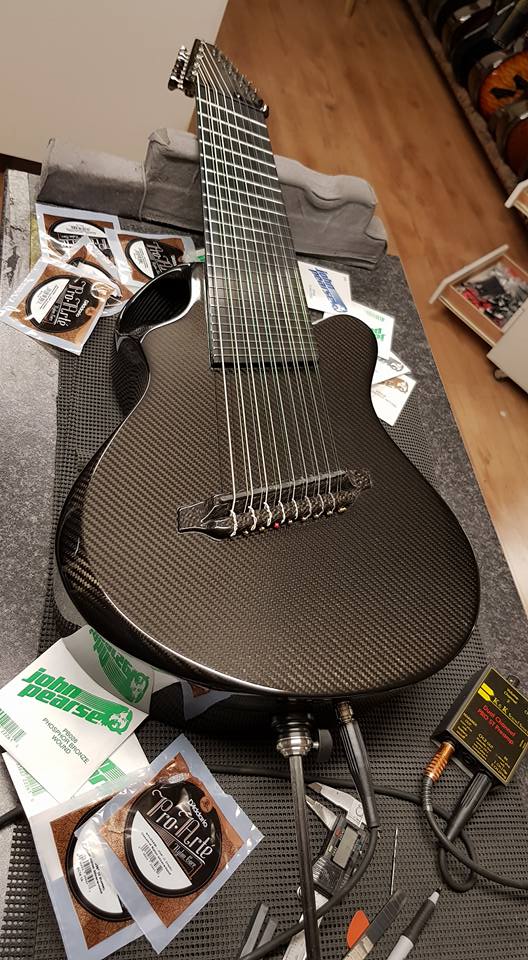 The KK-17: During the setup process at Emerald Guitars in Ireland.
|
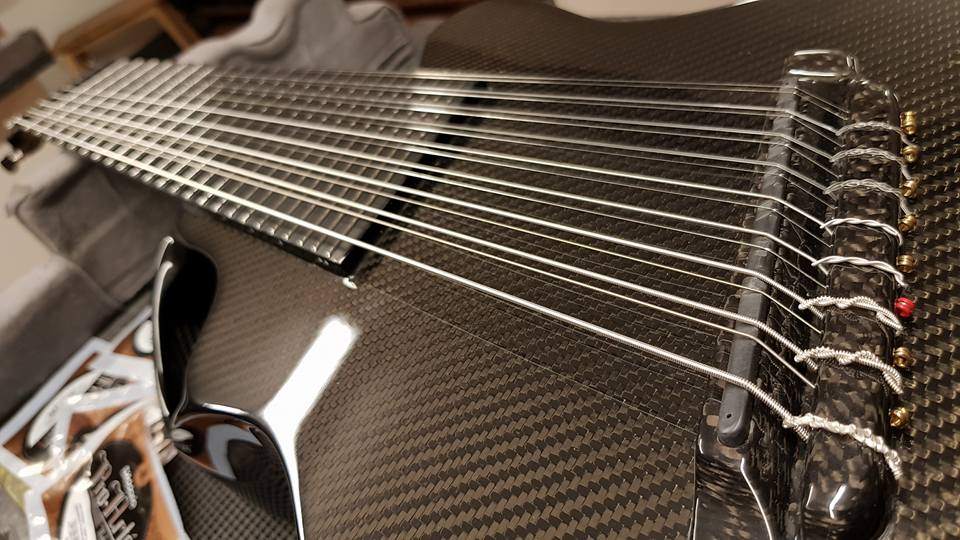
The KK-17: During the setup process at Emerald Guitars in Ireland.
|
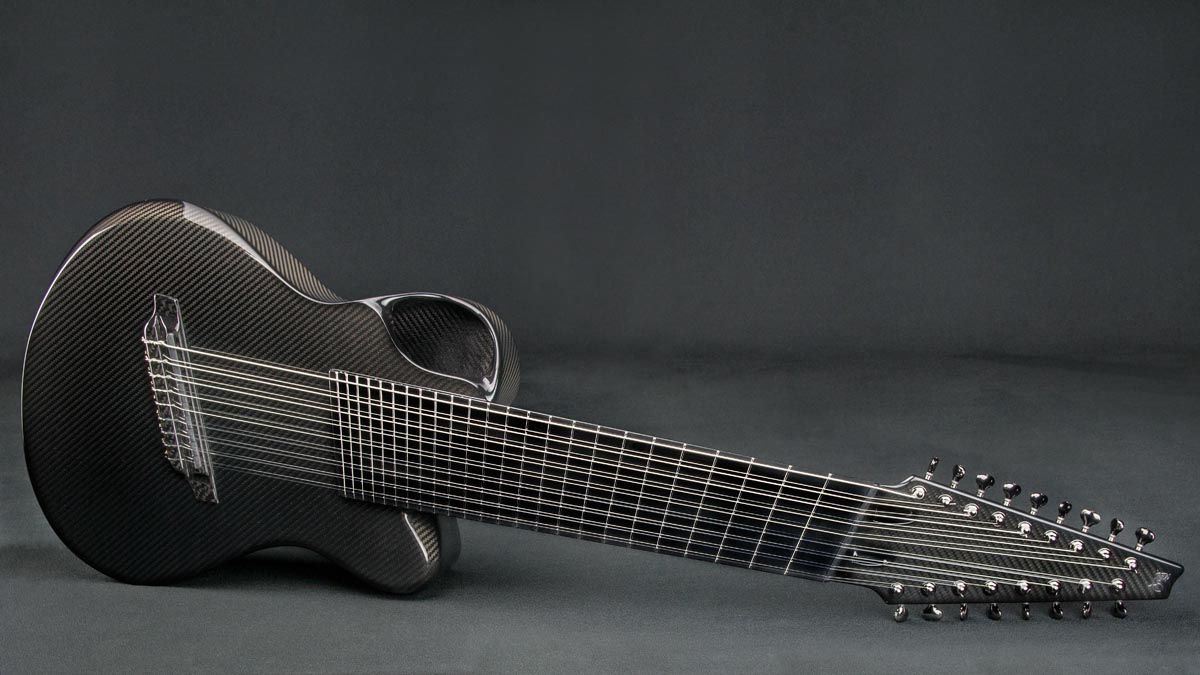 |
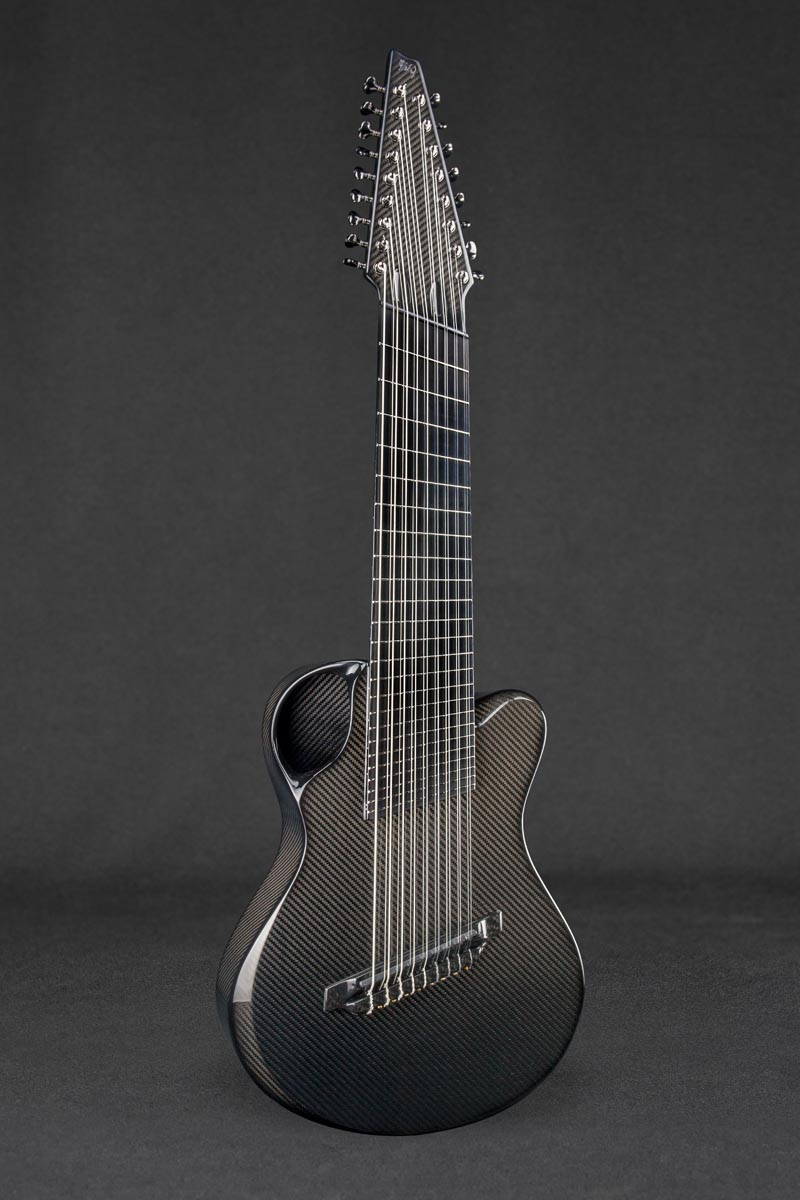 |
 |
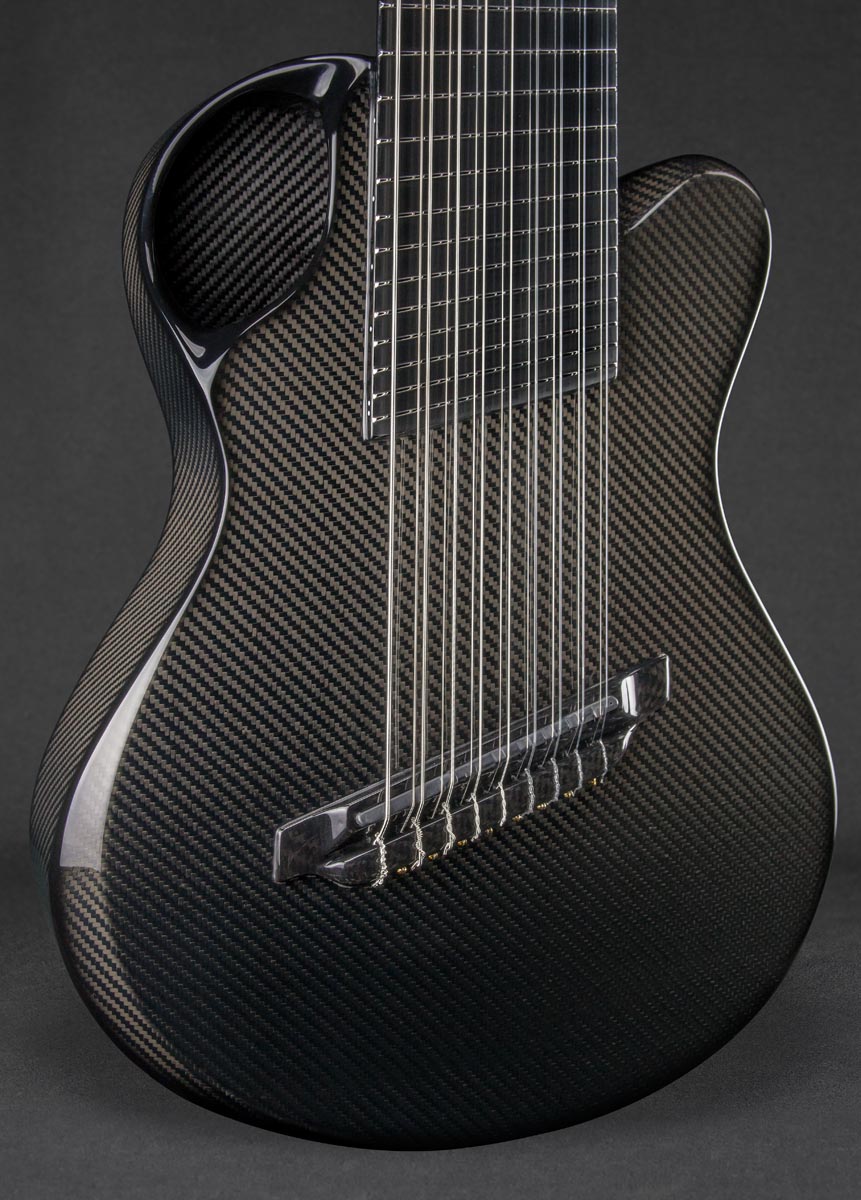 |
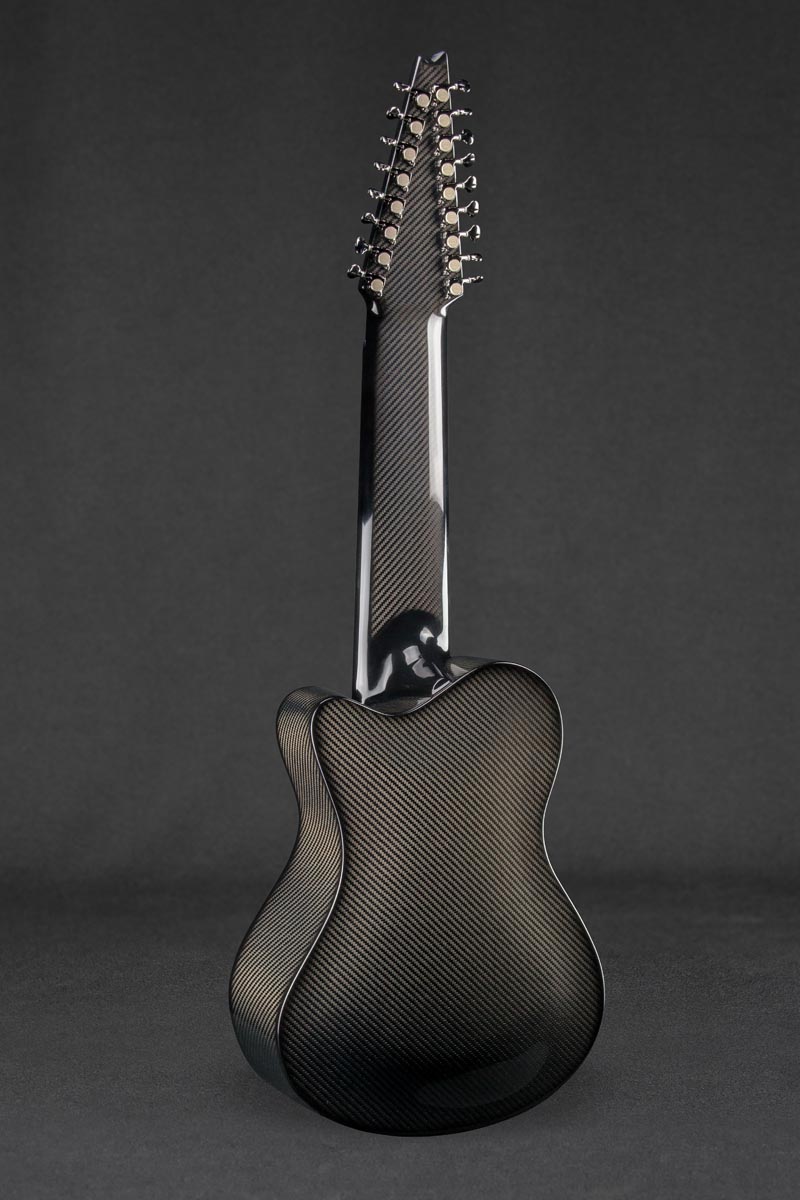 |
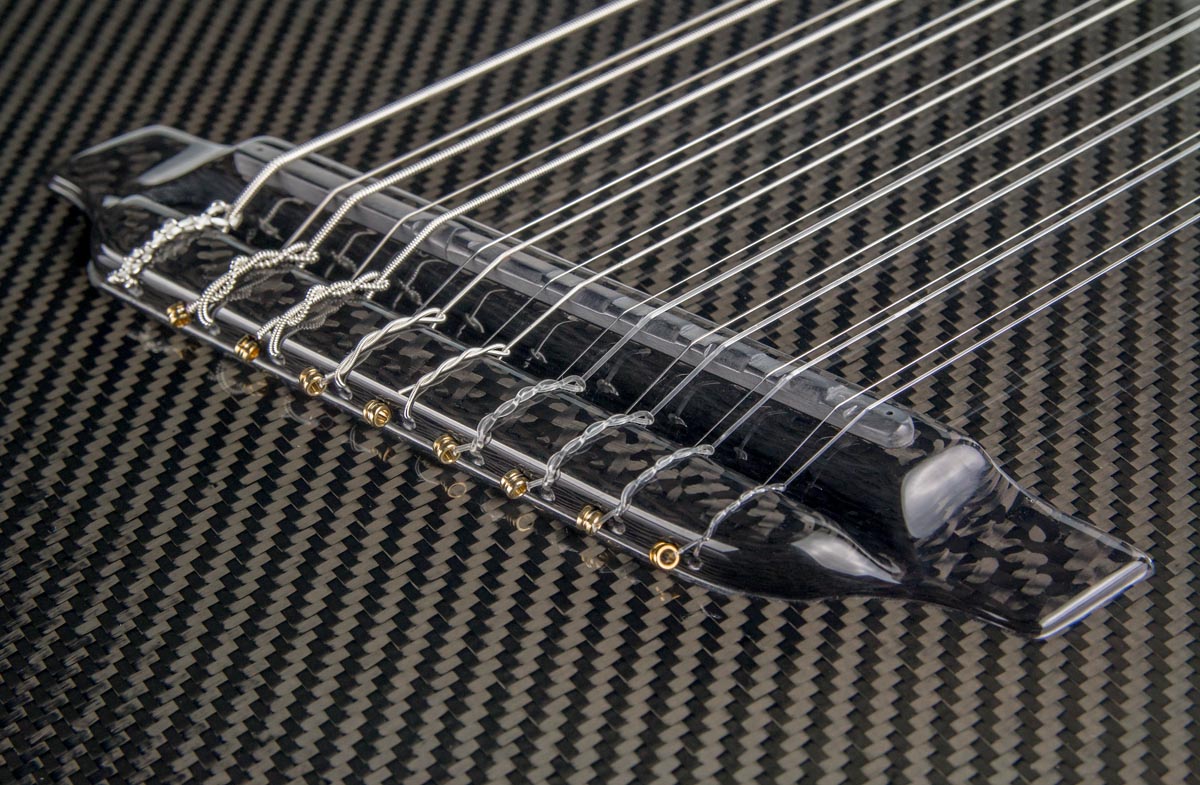 |
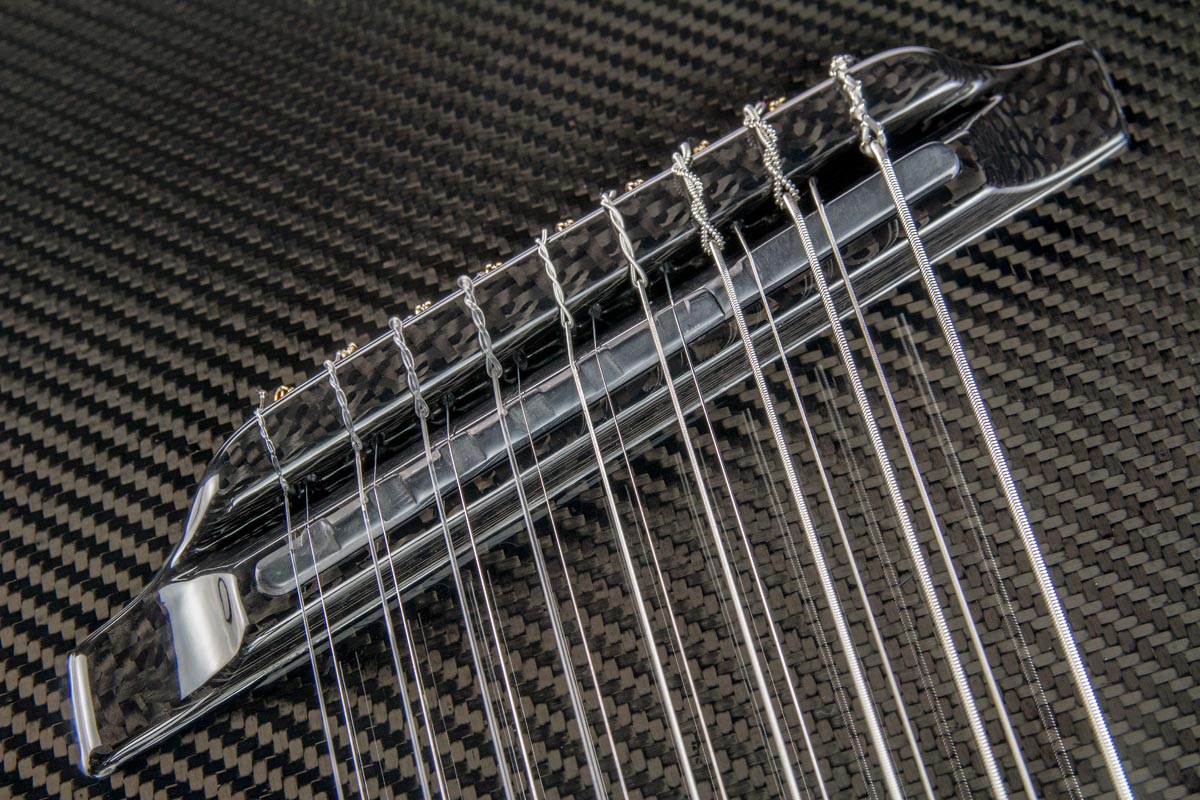 |
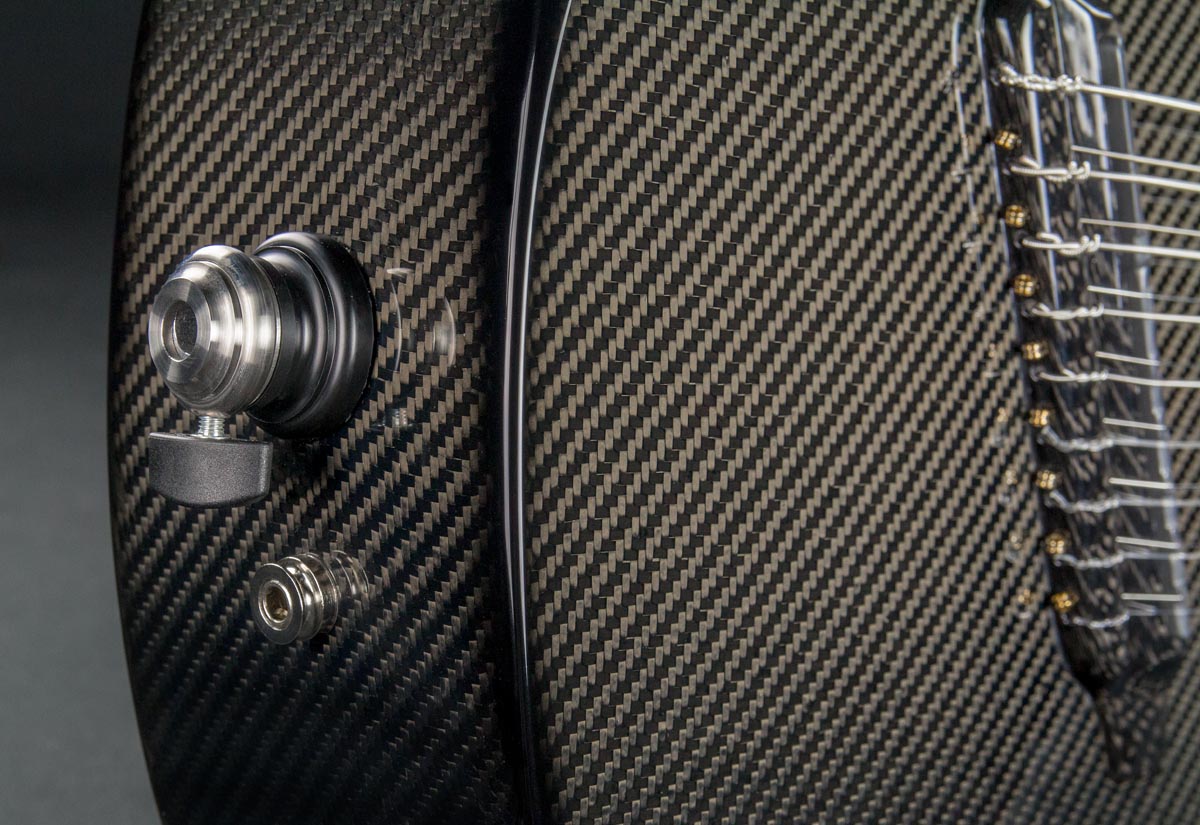 |
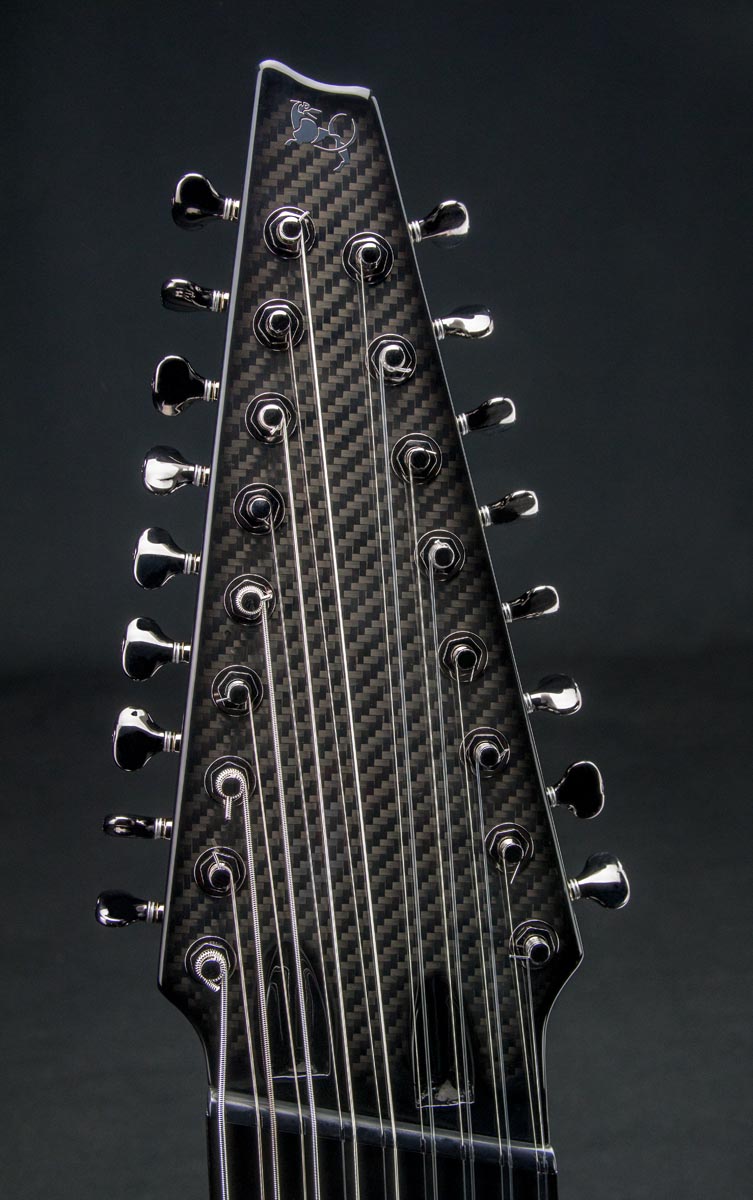 |
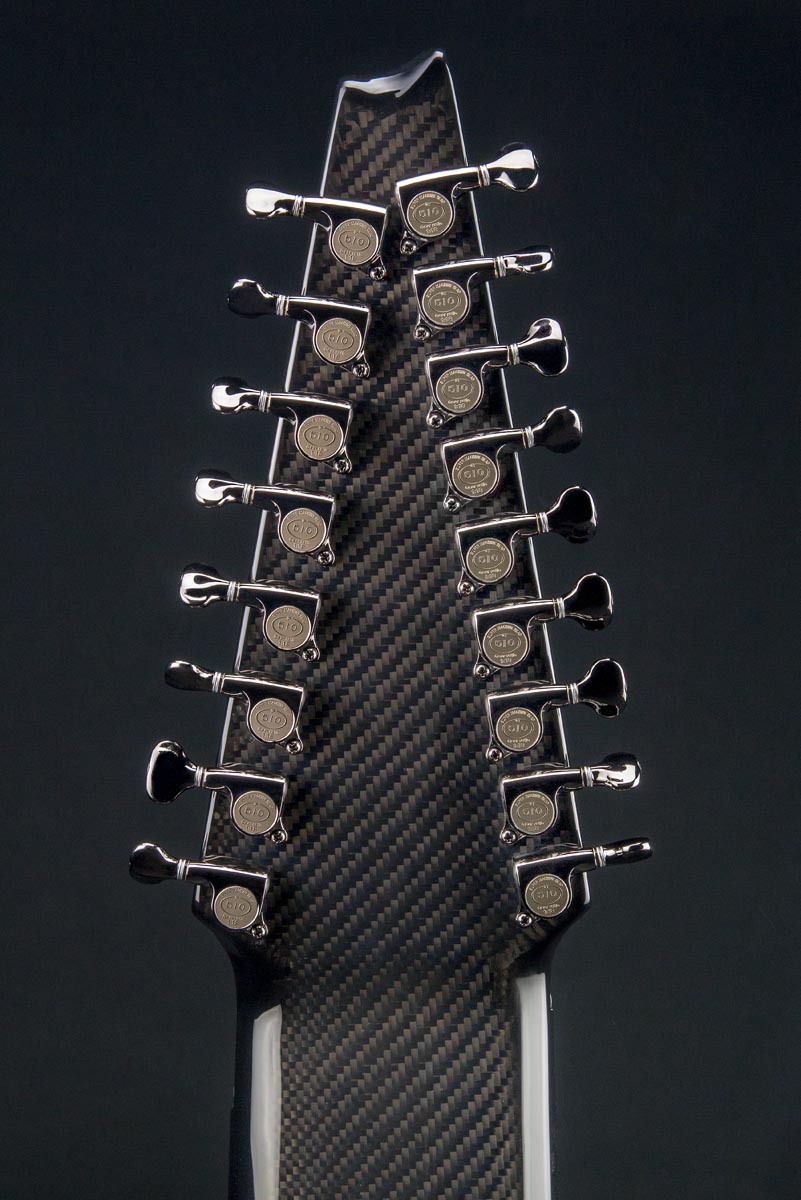 |
 |
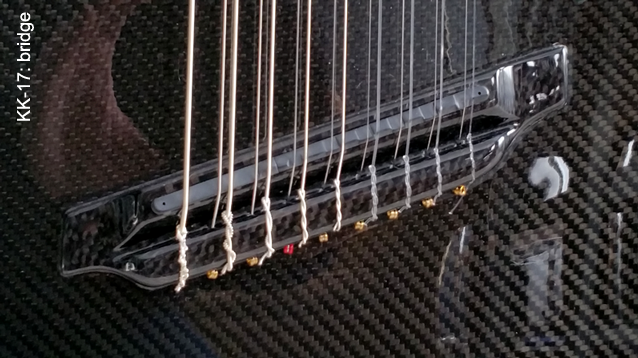 The KK-17 bridge. Here you can see the blend of both nylon and steel strings.
|
|
|
F# Bb Ee Aa Dd Gg BB EE AA
For actual string gauges and string types, refer to the Strings and Tunings page.
17-string Hybrid Extended classical
Body: X20
Bridge: Half classical tie-on type; half ball-end steel
Neck: Fan-fret, based on 650mm scale
Multiscale dimensions: 27.25 inches bass side to 24.5 inches treble side
Nut width: 4.00 inches / 102mm
24 frets
Saddle: Graphtech custom
Fingerboard radius: flat
Double truss rods
Cello end pin
K&K stereo system (bass side = stereo L / treble side = stereo R)
Tuners: Gotoh 510 series, 18:1 metro black
Color: Transparent black
Other instruments in the Emerald Kevin Kastning Signature series:
The Emerald Kevin Kastning Signature model 30-string Contra-Alto guitar
The Emerald Kevin Kastning Signature model 36-string Double Contraguitar
The Emerald Kevin Kastning Signature model 15-string Extended Classical guitar
The Kevin Kastning Signature model 15-string Extended Classical guitar at Emerald Guitars